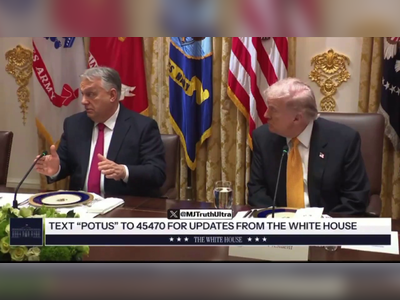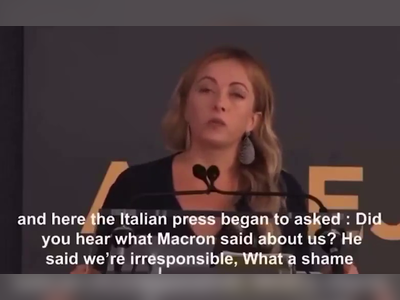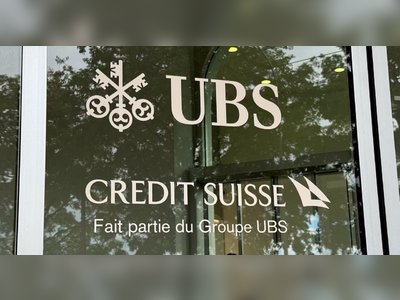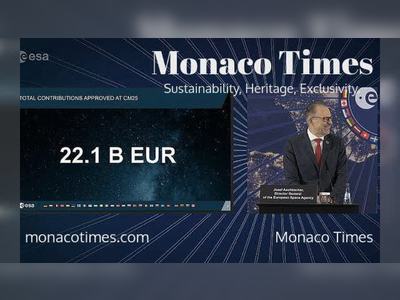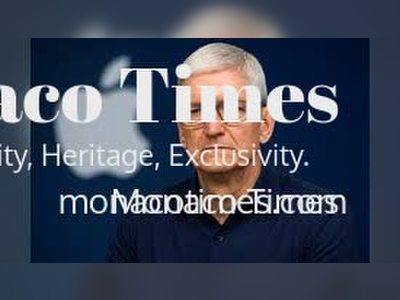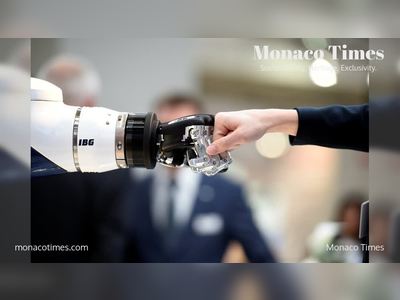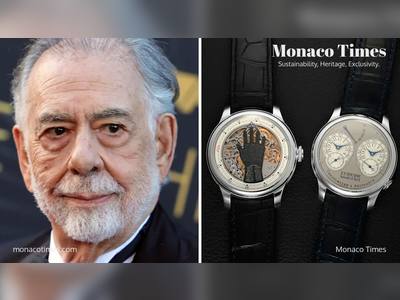After Pope Francis' Funeral, Questions Arise Over Succession
Pope Francis, laid to rest in Rome, opens discussions on the future leadership of the Catholic Church.
Pope Francis, who passed away on Easter Monday at the age of 88, was interred on Saturday in a grand ceremony at the Basilica of Santa Maria Maggiore in Rome.
This event followed a private funeral attended by more than 400,000 individuals, and it marked the beginning of nine days of mourning observed by the Vatican.
The public will have the opportunity to pay their respects at his grave starting Sunday morning.
A memorial Mass presided over by Cardinal Pietro Parolin, the former second-in-command at the Vatican, is scheduled for 08:30 GMT in St. Peter’s Square.
Cardinal Parolin is set to offer tributes to the late pope, whose burial site is adorned solely with the inscription "Franciscus," the Latin name for Francis, located in a side chapel of Santa Maria Maggiore.
During the nine-day mourning period, known as the "novemdiales," daily observances will take place at St. Peter's until May 4. Following this, the 135 cardinal electors—those under the age of 80—may convene in a conclave to elect the next pope.
This gathering will be held in the Sistine Chapel, traditionally conducted behind closed doors.
The announcement regarding the commencement date of the conclave may occur on Monday after a fifth preparatory meeting, termed a "general congregation," involving both electors and non-electors of the College of Cardinals.
According to established Vatican regulations, the conclave is expected to commence between the 15th and 20th day following the pope's death, which places its start between May 5 and May 10. Cardinal Jean-Claude Hollerich of Luxembourg has suggested it may likely begin on either May 5 or 6, while Cardinal Reinhard Marx of Germany has indicated that the process could span several days.
The funeral has drawn significant public engagement, reflecting the widespread affection for Pope Francis, who has been described as a pontiff with a deep connection to the people.
High-profile attendees included numerous state leaders, and reports noted that the ceremony was marked by moments of applause from the congregation.
The former pontiff, recognized for his advocacy of a Church that is "a home for all," emphasized issues such as the plight of refugees and the marginalized during his tenure.
This ethos resonated strongly with those attending the funeral.
Individuals like 16-year-old Ezequiel Castro expressed faith in the upcoming conclave, stating confidence in the cardinals to be led by the Holy Spirit in their decision-making.
As crowds gathered in Rome, sentiments ranged from concern over the direction the Church might take under a new leader to reflections on Pope Francis' legacy as a reformist figure.
Attendees included Romina Cacciatore, an Argentine residing in Italy, who shared her anxieties about the future, noting the significance of Pope Francis' efforts to make the Church feel more inclusive and relatable.
The discussions about succession bring to light the potential implications for the Church’s future, as experts underline that the next pope may not necessarily follow in Francis' footsteps, despite the former pope’s influence on the majority of the cardinals eligible to vote in the conclave.
The differing backgrounds of recent pontiffs, from Francis to his predecessors, highlight the varied approaches to papal leadership that may shape the Church moving forward.
This event followed a private funeral attended by more than 400,000 individuals, and it marked the beginning of nine days of mourning observed by the Vatican.
The public will have the opportunity to pay their respects at his grave starting Sunday morning.
A memorial Mass presided over by Cardinal Pietro Parolin, the former second-in-command at the Vatican, is scheduled for 08:30 GMT in St. Peter’s Square.
Cardinal Parolin is set to offer tributes to the late pope, whose burial site is adorned solely with the inscription "Franciscus," the Latin name for Francis, located in a side chapel of Santa Maria Maggiore.
During the nine-day mourning period, known as the "novemdiales," daily observances will take place at St. Peter's until May 4. Following this, the 135 cardinal electors—those under the age of 80—may convene in a conclave to elect the next pope.
This gathering will be held in the Sistine Chapel, traditionally conducted behind closed doors.
The announcement regarding the commencement date of the conclave may occur on Monday after a fifth preparatory meeting, termed a "general congregation," involving both electors and non-electors of the College of Cardinals.
According to established Vatican regulations, the conclave is expected to commence between the 15th and 20th day following the pope's death, which places its start between May 5 and May 10. Cardinal Jean-Claude Hollerich of Luxembourg has suggested it may likely begin on either May 5 or 6, while Cardinal Reinhard Marx of Germany has indicated that the process could span several days.
The funeral has drawn significant public engagement, reflecting the widespread affection for Pope Francis, who has been described as a pontiff with a deep connection to the people.
High-profile attendees included numerous state leaders, and reports noted that the ceremony was marked by moments of applause from the congregation.
The former pontiff, recognized for his advocacy of a Church that is "a home for all," emphasized issues such as the plight of refugees and the marginalized during his tenure.
This ethos resonated strongly with those attending the funeral.
Individuals like 16-year-old Ezequiel Castro expressed faith in the upcoming conclave, stating confidence in the cardinals to be led by the Holy Spirit in their decision-making.
As crowds gathered in Rome, sentiments ranged from concern over the direction the Church might take under a new leader to reflections on Pope Francis' legacy as a reformist figure.
Attendees included Romina Cacciatore, an Argentine residing in Italy, who shared her anxieties about the future, noting the significance of Pope Francis' efforts to make the Church feel more inclusive and relatable.
The discussions about succession bring to light the potential implications for the Church’s future, as experts underline that the next pope may not necessarily follow in Francis' footsteps, despite the former pope’s influence on the majority of the cardinals eligible to vote in the conclave.
The differing backgrounds of recent pontiffs, from Francis to his predecessors, highlight the varied approaches to papal leadership that may shape the Church moving forward.
